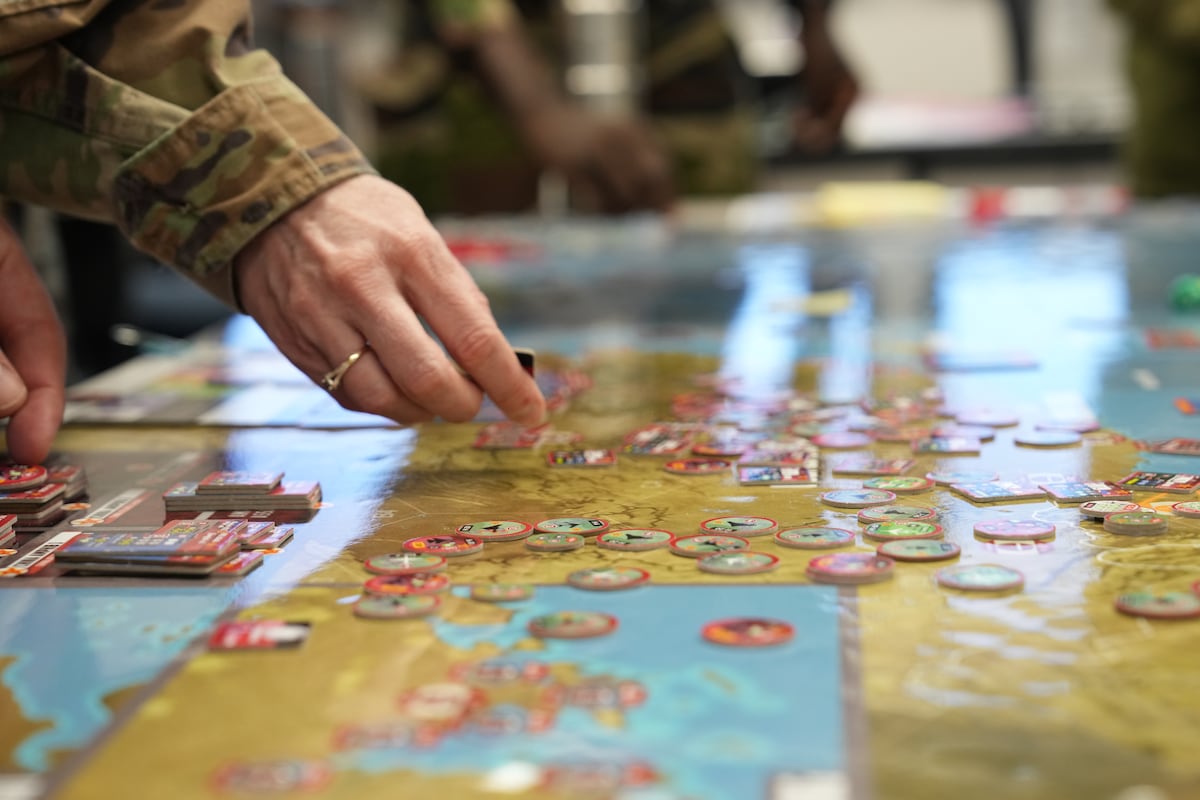Twenty years ago, an explosion occurred in professional baseball as traditional baseball scouts — relying on decades of personal experience — collided with data scientists bringing new approaches and technology into the evaluation of baseball players. There were raucous debates on which approach would reign supreme: human expertise or numbers and statistics? We now know that neither approach would win out; the best baseball teams across the major leagues rely on a mix of human expertise and advanced statistics to provide the most complete assessment of talent.
Fast forward to today and a similar tension has formed in the field of defense wargaming, where traditional wargamers — relying on years of expertise and bespoke game designs — are coming to grips with rapid advances in modeling and simulation and artificial intelligence.
At the Johns Hopkins Applied Physics Laboratory, we have been living and breathing that tension as we have worked to incorporate generative AI and modeling and simulation into defense wargaming. The results of that work? We don’t think we need a 20-year debate. Just like in baseball, the future of wargaming lies in a marriage of modeling and simulation, human expertise and AI.
To understand why wargaming is having its “Moneyball” moment, you have to first unpack what makes traditional wargaming so valuable. Wargaming is fundamentally about human decision-making, but its magic is in the experiential learning opportunities the games provide. War is never simple. There is no “all-seeing eye” that provides perfect information. Hence, wargaming explores how humans make decisions in imperfect scenarios, and how other humans respond to those decisions.
Armies of psychologists have spent entire careers attempting to understand human decision-making. It’s not easy to boil down to numbers and equations. Moreover, it’s conveyed through conversation, discussion and debate, something that technology has yet to harness or replicate.
Wargames have served as an indispensable tool in this exploration. They provide a way to exercise the decision-making process, explore why choices were made and determine what the implications might be. However, being human-centric isn’t always efficient. Wargames often require months of planning by experienced wargamers who deeply understand the defense issues at play. They also require human players with the expertise to emulate the various parties in a conflict. All this means wargames are often hosted on an annual cycle and can only explore a small number of the potential scenarios a national security leader might encounter.
After all, how many people could plausibly play the role of Vladimir Putin or Xi Jinping?
But with the advent of generative AI, we now have the ability to ask a computer to harness human language and, at a minimum, plausibly approximate human conversation and decision-making. That opens an opportunity to merge technology and wargaming in a way that hasn’t previously been possible — meaning we can bring wargaming to a wider audience over a broader set of possible scenarios.
Combine AI and physics-based modeling and simulation, which can traceably adjudicate how interactions between military platforms will play out (think whether or not an F-35 will be detected), and suddenly you can run wargames with a much smaller number of human players across a much larger number of scenarios. Because the artifacts of these games are captured digitally, you can then rapidly conduct assessments of exactly what happened and why it happened — which is incredibly labor-intensive in traditional wargaming.
While AI skeptics may rightfully point out that the future of AI has been overhyped for literally decades, we are no longer talking about the future of AI. It is a valuable addition to the wargaming toolkit right now — today. We know this because, with AI tools and a modeling and simulation backbone, we are building new scenarios in just days with a mix of AI and human players to explore numerous iterations, branches and variations of a conflict.
Are those AI players infallible? Far from it. But the ability to rapidly iterate the game — you can rewind and replay any move in a matter of seconds — allows you to explore a range of human and AI behaviors and begin to see the breadth of possible outcomes in any military scenario. And when you find that scenario that is critically important for human decision-makers to consider? That is when traditional wargaming really shines. Let national security leaders have that discussion and debate so that they can apply human judgment to the most consequential and important decisions.
The future of wargaming isn’t about traditionalists versus technologists. It’s about traditionalists and technologists working together, just like it was and is in professional baseball. We don’t need 20 years of debate to arrive at that conclusion.
Andrew Mara is the head of the National Security Analysis Department at the Johns Hopkins Applied Physics Laboratory (APL) where he leads the analytic team assessing the capabilities needed to solve the most pressing national security challenges; Kelly Diaz leads the Advanced Concepts and Capabilities program at APL, which aims to address complex national security challenges and inform strategic decision-making through innovative and data-driven approaches; Kevin Mather leads a team of analysts at APL in the development of advanced modeling and simulation analysis tools, including advanced framework for simulation, integration and modeling (AFSIM) and AI techniques to support complex national security analysis and decision-making.
Read the full article here





